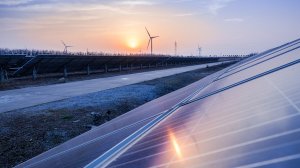Independent power producer body rejects an IRP that ‘plans to fail’
The South African Independent Power Producer Association (SAIPPA) has added its voice to a growing chorus of opposition to the draft Integrated Resource Plan 2023 (IRP 2023), the comment deadline for which is on March 23.
In its formal comment on the draft, SAIPPA argues that the document is seriously flawed and inadequate to meet the energy challenges of South Africa.
“In its current form, the IRP does not constitute a firm plan to address the urgent energy security shortages and lacks the sense of urgency required to get the country out of a protracted energy crisis, which is causing devastating economic harm.”
This conclusion gels with the one made by Meridian Economics in its submission, in which it argues that serious problems with the modelling and cost assumptions used have resulted in the IRP 2023 arriving at “incorrect and economically damaging conclusions”.
SAIPPA argues that the IRP 2023, which includes two time horizons, “plans to fail” in the first horizon to 2030 by planning for a deficit, represented by ongoing loadshedding until at least 2027, instead of modelling options to address the shortage through the addition of new capacity.
While questioning the rationale for the splitting of the plan into two horizons, the organisation also raises serious issues with Horizon 2, which it believes has been artificially shaped by a set of undisclosed new-build constraints to “derive a particular outcome”.
This, instead of modelling for least-cost generation, while meeting greenhouse-gas emission goals and ensuring stable and consistent electricity supply.
“In both horizons, it appears that new-build constraints were applied as the outcomes across all scenarios show clearly that solar photovoltaic (PV) could not exceed 900 MW per annum up to 2050.
“Additionally, wind capacity looks to be constrained between 2031 and 2040, where no more than 17.2 GW cumulative was allowed across all scenarios.”
Such constraints, SAIPPA says, make no sense from both a modelling and practical perspective, while describing as “preposterous” a scenario whereby these limits remain constant for decades.
SAIPPA also questions all the technology cost assumptions used by the Department of Mineral Resources and Energy, noting that the solar PV and wind costs used are far higher than what has been achieved in various domestic procurement rounds, while the model does not cater for battery technology learning rates.
But contrast it describes costs assigned to concentrated solar power and nuclear as “optimistic”.
“In essence the document is biased against renewable energy, by using the wrong cost comparisons … whilst nuclear and gas costs are almost always used in the lower percentile of cost and are, hence, optimistically reflected.
“This results in outcomes that do not compare with what is happening elsewhere in the world.”
SAIPPA also questions the high load factor of above 50% assigned to gas-to-power facilities, as well as the inclusion of a scenario that assumes a steep recovery in the coal fleet energy availability factor (EAF), which has been declining for years.
Also highlighted is the fact that the IRP 2023 does not clarify the cost assumptions used in the scenario where the shutdown of the coal fleet is delayed and whether these costs include investments at the five stations to meet South Africa’s minimum emission standards.
From a policy perspective, meanwhile, SAIPPA notes inconsistencies between the IRP 2023 and various other government policies, including its goal to reduce greenhouse-gas emissions.
In its submission, SAIPPA also argues that the government, in drafting the IRP, should also take account of the envisaged liberalisation of the market, which will result in a gradual transition towards competition, especially in generation.
“The need to have a formal IRP determination and bid rounds will gradually became less and less as the market takes the challenge up over time.
“It is thus important that government doesn’t embark on generation plans that cause some stranded investment that will burden the affordability of supplies to the South African population.”
Comments
Announcements
What's On
Subscribe to improve your user experience...
Option 1 (equivalent of R125 a month):
Receive a weekly copy of Creamer Media's Engineering News & Mining Weekly magazine
(print copy for those in South Africa and e-magazine for those outside of South Africa)
Receive daily email newsletters
Access to full search results
Access archive of magazine back copies
Access to Projects in Progress
Access to ONE Research Report of your choice in PDF format
Option 2 (equivalent of R375 a month):
All benefits from Option 1
PLUS
Access to Creamer Media's Research Channel Africa for ALL Research Reports, in PDF format, on various industrial and mining sectors
including Electricity; Water; Energy Transition; Hydrogen; Roads, Rail and Ports; Coal; Gold; Platinum; Battery Metals; etc.
Already a subscriber?
Forgotten your password?
Receive weekly copy of Creamer Media's Engineering News & Mining Weekly magazine (print copy for those in South Africa and e-magazine for those outside of South Africa)
➕
Recieve daily email newsletters
➕
Access to full search results
➕
Access archive of magazine back copies
➕
Access to Projects in Progress
➕
Access to ONE Research Report of your choice in PDF format
RESEARCH CHANNEL AFRICA
R4500 (equivalent of R375 a month)
SUBSCRIBEAll benefits from Option 1
➕
Access to Creamer Media's Research Channel Africa for ALL Research Reports on various industrial and mining sectors, in PDF format, including on:
Electricity
➕
Water
➕
Energy Transition
➕
Hydrogen
➕
Roads, Rail and Ports
➕
Coal
➕
Gold
➕
Platinum
➕
Battery Metals
➕
etc.
Receive all benefits from Option 1 or Option 2 delivered to numerous people at your company
➕
Multiple User names and Passwords for simultaneous log-ins
➕
Intranet integration access to all in your organisation




















